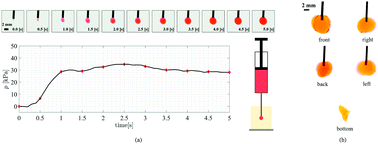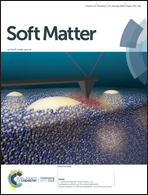Volume-controlled cavity expansion for probing of local elastic properties in soft materials
Abstract
Cavity expansion can be used to measure the local nonlinear elastic properties in soft materials, regardless of the specific damage or instability mechanism that it may ultimately induce. To that end, we introduce a volume-controlled cavity expansion procedure and an accompanying method that builds on the Cavitation Rheology technique [J. A. Zimberlin et al., Soft Matter, 2007, 3, 763–767], but without relying on the maximum recorded pressure. This is achieved by determining an effective radius of the cavity that is based on the volume measurements, and is further supported by numerical simulations. Applying this method to PDMS samples, we show that it consistently collapses the experimental curves to the theoretical prediction of cavity expansion prior to the occurrence of fracture or cavitation, thus resulting in high precision measurement with less than 5% of scatter and good agreement with results obtained via conventional techniques. Moreover, since it does not require visual tracking of the cavity, this technique can be applied to measure the nonlinear elastic response in opaque samples.



 Please wait while we load your content...
Please wait while we load your content...